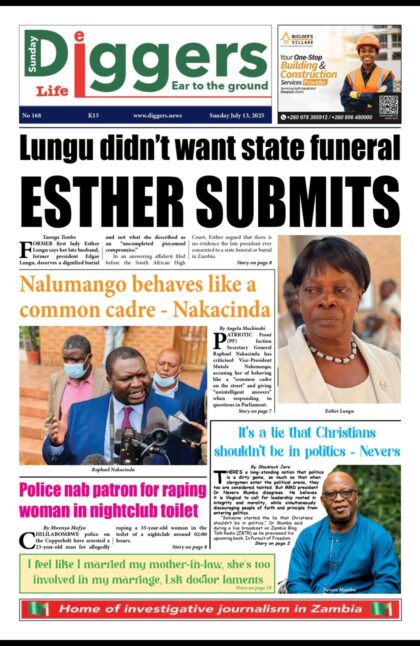THE kwacha’s depreciation to an all-time low of K16.00 per dollar has been proven to be the worst-performing African currency despite Zambia being one of three countries on the continent without confirmed cases of the deadly COVID-19.
Last Friday, the kwacha depreciated to breach the K16.00 per dollar psychological barrier for the first time in Zambia’s history, owing to a sustained high demand for the greenback on the local market, compounded with little supply.
According to market data compiled for a period of one year, the kwacha’s depreciation against the dollar had been the worst out of a basket of nine African currencies, yet it is only just one of three countries that have no confirmed case of COVID-19.
Vice-President Inonge Wina told Parliament during Vice-President’s Question Time last Friday that the kwacha’s depreciation was mainly attributed to the Coronavirus outbreak, without, however, clearly explaining how the virus had triggered a rapid depreciation.
From March, 2019 to March, 2020, the kwacha’s performance was the worst, having posted losses of 33 per cent year-on-year compared to the South African rand, which depreciated by only 13 per cent against the dollar during the same period under review yet South Africa has over 61 confirmed cases of COVID-19, the highest on the continent so far.
Other economies that have recorded cases of the outbreak as at March, 2020, were: Namibia, the DRC and Rwanda, whose currencies had marginally depreciated against the greenback by 12 per cent; four per cent and six per cent respectively.
On the other hand, the Tanzanian shilling actually appreciated by two per cent over the same period under review despite Tanzania recording its first-ever case of COVID-19 by the mid-month period.
According to financial market players, the kwacha maintained a weak position, depreciating to breach and crash through the K16.00 per dollar mark last week.
It has continued its depreciating trend to an average K16.30 per dollar from an average of around K15.32 per dollar earlier this month, a further slide from about K14.70 per dollar at the beginning of the year.
Meanwhile, FNB Zambia stated in its Treasury market update that the kwacha was likely to remain range-bound above the K16 per dollar mark.
“We open the week with the news that the Fed has cut rates further, a move which should see a ‘risk-on’ environment as the US tries to boost its own economy and the global economy overall. We expect this news to have a minimal effect on the kwacha, however, which is expected to open at last week’s opening and trade within the range of K16.05/K16.10,” stated FNB, Monday.
Most market experts predicted that the kwacha was likely to continue its free-fall amidst low economic productivity, compounded with heavy imports, which continue to put pressure on the local currency.



















